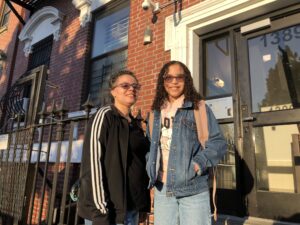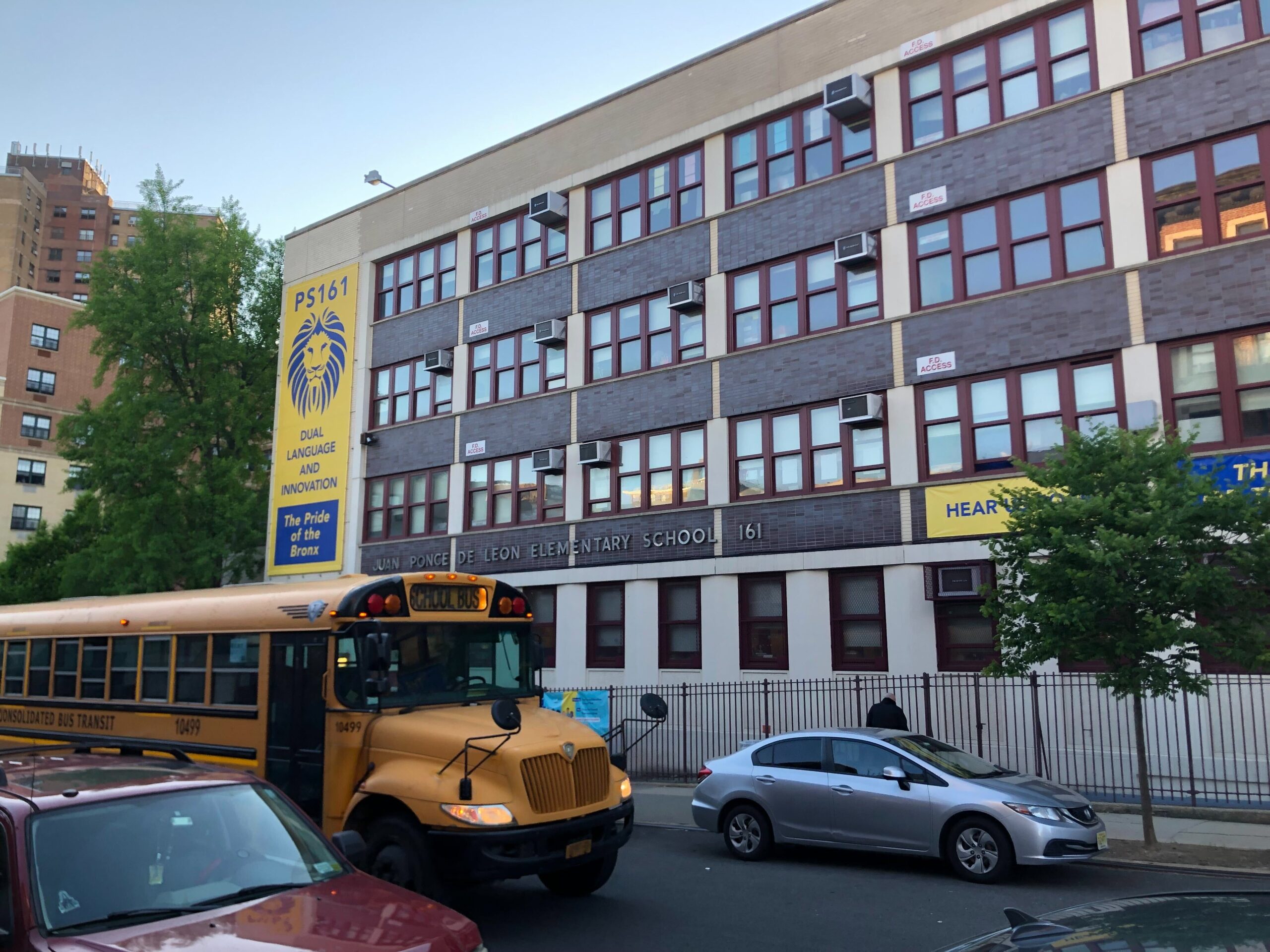New York City is overhauling how the Department of Education screens and educates students with dyslexia and other language-based learning difficulties, starting with a pilot in second and third grade classrooms in the South Bronx devoted to dyslexic students.
PS 161 on Tinton Avenue in Woodstock will host one of the first pilot programs, starting this fall. It will be run by Literacy Academy Collective, a Manhattan parent collective that pitched a program to develop 20 dyslexia education schools in 2019.
In addition to the Bronx program, the Lab School for Family Literacy will launch its own pilot at PS 125 in Manhattan. Under the administration’s plan, at least one school in every borough will offer specialized instruction for dyslexic students by Fall 2023.
Under this new $7.4 million initiative, which was included in Mayor Eric Adams’ executive budget for 2022-23, all New York City public school students will take screening tests assessing them for signs of dyslexia, be offered support at their neighborhood school, and get specialized instruction through programs flowing out of the two initial pilot academies.
Starting in the fall, 80 elementary and 80 middle schools are to receive support and instructor training to allow them to conduct literacy screening for all students. Students identified during screening will either receive support at their home schools or they’ll head to one of the two pilot programs.
The Literacy Academy Collective program in Mott Haven will operate the second and third grade classrooms, with hopes to open a full K-8 academy for Fall 2023. The pilot programs in Harlem and Mott Haven follow the Bridge Preparatory Charter School in Staten Island, which opened in 2019 to serve dyslexic students.
“I struggled with identifying my dyslexia until long after leaving the public school system,” Adams said during a May news conference with Schools Chancellor David Banks announcing the changes.
South Bronx students have among the city’s highest rates of disabilities and learning differences, which means there are sometimes not enough resources to serve all students’ needs, Nelson Mar of the Education Law Unit at Bronx Legal Services said.
Sophia Reyes had speech challenges going into kindergarten in their Crotona Park East neighborhood, so her mother, Maria Torres, 41, tried to get Sophia an Individualized Education Plan (IEP). Schools are required by federal law to develop such a plan to accommodate students’ disabilities and learning differences.
“It took 100 phone calls to the District 12 Special Education Department to actually get an IEP for when she started kindergarten,” Torres said. “That was my initial introduction to the special education system within the Department of Education in New York City and it wasn’t pleasant.”
Torres suspected Sophia was dealing with more than a speech impediment because she was familiar with the signs of dyslexia because both of her brothers had it. But Sophia’s speech difficulties made it difficult for people to diagnose her with dyslexia because they had trouble understanding her.

She was evaluated for dyslexia six times, but wasn’t diagnosed until the third grade. By then, she was still reading at first grade level. Sophia’s individualized plan for speech therapy wasn’t granted until the day before school opened last fall.
After Sophia’s diagnosis, it took four months for the district to update her IEP. By that time in Spring 2020, schools hastily shut down from the pandemic before she was able to settle into the new program and even then, that school was unable to accommodate her learning needs.
Torres said that even though the school “really tried” to provide Sophia extra services, they couldn’t meet her needs because the special education teachers were not exposed to specifically serving dyslexic students.
“They still couldn’t get Sophia to move up a reading level or get her to read at a higher level or spell or recognize words or hold the memory of those letters in her head,” Torres said. “It’s not just having the proper certifications. It’s also having the years of experience to best benefit those children.”
Torres struggled to convince the school district that Sophia needed additional services, despite a medical record and little signs of improvement. She was initially unable to convince the district to cover the cost of a specialized school or for tutoring, which the DOE is required to provide if a child’s needs cannot be met within the district.
“I felt that they were just pushing my kid through the system,” aiming to meet minimal requirements, Torres said. “How are you going to continue to promote my child when she is unable to read? She’s incredibly smart. Her comprehension is there, her math is there. It’s not that she can’t learn. The Department of Education can’t teach her and kept on denying those services.” This approach, she said, made her daughter lose her self-confidence.
“They did it to my two older brothers and now, as grown adults, they have difficulties finding jobs because they are so embarrassed to say that they are dyslexic. No one should be embarrassed of the fact that they are different from other people,” Torres said, “That’s one thing that the Education Department did to my daughter for a very long time. She felt stupid, she was insecure.”
When Torres met with a lawyer from the Education Law Unit at Bronx Legal Services, Kathleen Dennin, she realized the school system should be doing more. If Sophia needed literacy tutoring her school could not provide, the school was supposed to work with her to find it somewhere else.
When Sophia was finally granted tutoring, her mother signed her up to work with a Lindamood-Bell program. In 12 weeks with them, Sophia moved up a whole grade and one-half reading level.
“What the Department of Education was unable to do in five years with my daughter, this program was able to achieve in 12 weeks with their non-traditional ways of teaching,” Torres said.
Sophia said the program made learning enjoyable enough to keep her engaged in lessons that took place after an entire day of regular school.
“They would work on pronouncing words and they would help me if I got it wrong so it was a big help,” Sophia said. “It was always so much fun because they would play games and take like two breaks.”
Many New York families have been diagnosed relatively late in school, including New York State Senator Brad Hoylman’s daughter, Silvia.
“My husband and I only learned our daughter was dyslexic when she was already in fourth grade. In fact, estimates show we have over 200,000 undiagnosed dyslexic students in New York City alone,” Holyman said, praising the newly announced dyslexia program. “Now, we must use this momentum to extend these findings and measures to the hundreds of thousands of kids affected by dyslexia statewide.”
Legislation to establish a statewide dyslexia and dysgraphica screening task force for children in grades K-5 (A2185B) just passed the New York House and Senate and is waiting to be signed into law by Gov. Kathy Hochul.
NYC’s Department of Education has set April 2023 as the deadline for every K-12 teacher to participate in training to identify and support dyslexic children. Additionally, teachers will have the next year to incorporate a phonics-based literacy foundation into their curriculum for all students in kindergarten through the second grade.
Adams has promised to eventually expand dyslexia screening to New York high schools and to Rikers Island jail. He’s convinced dyslexia and other learning differences – which occur at higher rates among detainees – contribute to the school-to-prison pipeline and recidivism.
Public Advocate Jumaane Williams proposed legislation last year to require dyslexia screenings during intake on Rikers Island.
Amid the enthusiasm for the city’s new testing and specialized dyslexia classrooms, one concern is that specialized schools may contribute to segregation and that students would be better served if their regular schools had meaningful services for them.
“Can we do it in a way that will ultimately push these services out into individual community schools so that kids don’t have to be pulled out, segregated away, miles and miles away to sit on bus rides that take hours at a time?” asked Nelson Mar of Bronx Legal Services. “There’s a huge cascading number of other implications when you take children out of their homes and schools.”
While Sophia Reyes’ mother wonders whether the city’s school system can successfully manage the changes, she feels the promised dyslexia screening plus the new classrooms focused on serving kids with dyslexia might have made a big difference for her daughter.
Sophia, now 10 and in fifth grade, goes to a city-approved school in Long Island, but has to wake at 6:30 am to make it to class on time. She dreams of becoming a painter and sculptor, but, thanks to the specialized reading program she’s now in, she’s also a reading enthusiast.
“I really do like [reading] because all the books are really interesting,” Sophia said. “It’s just a little hard.”

